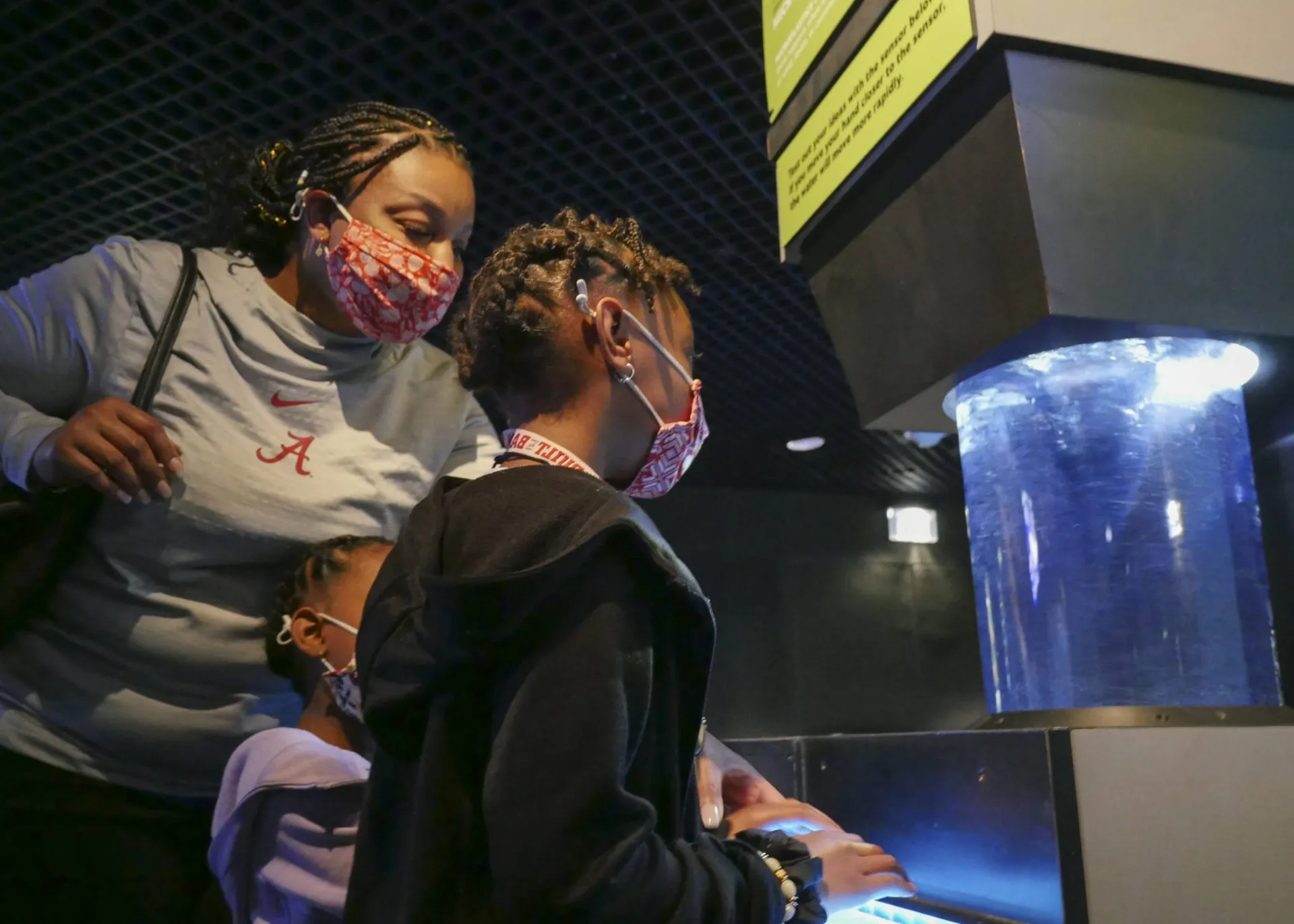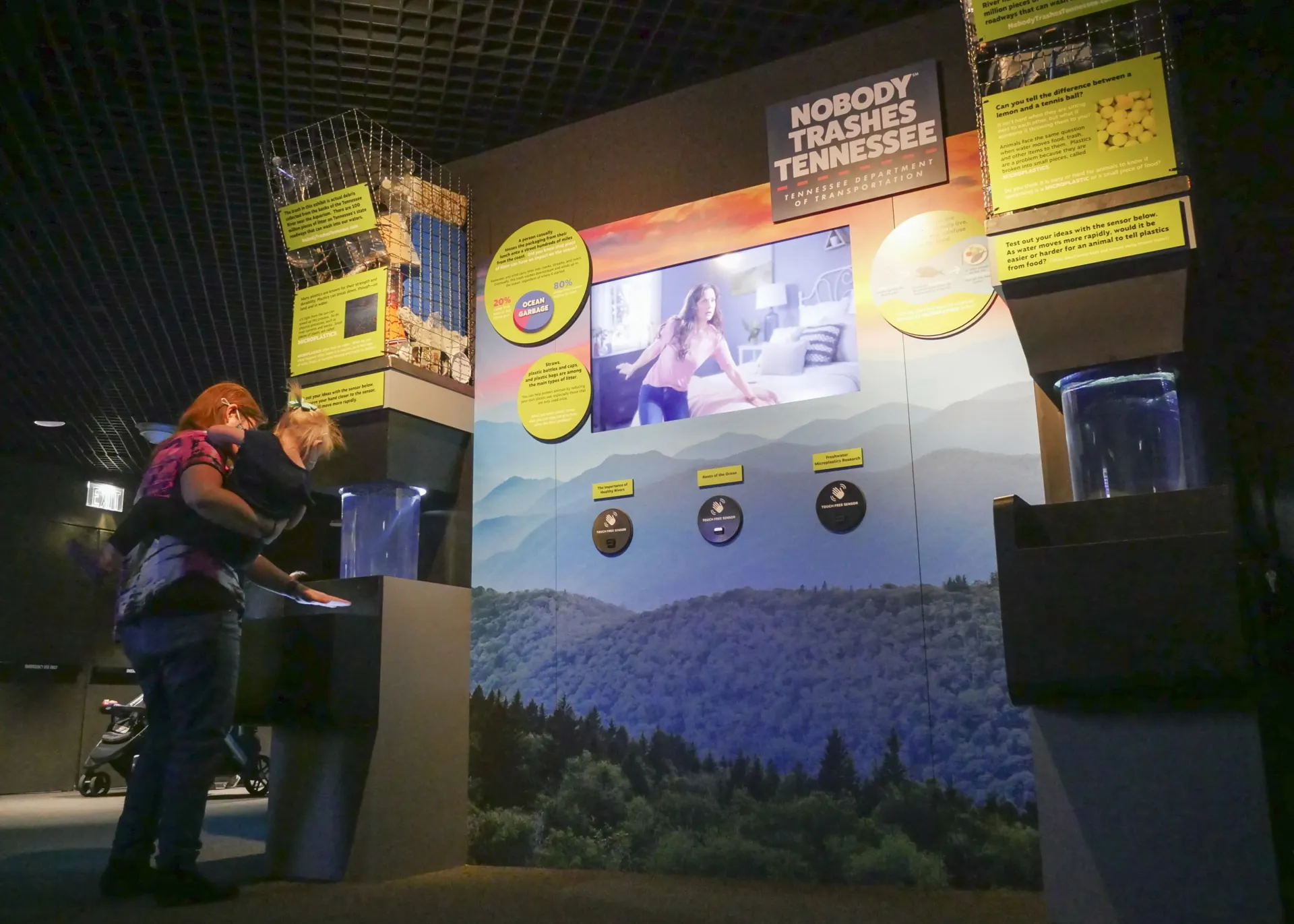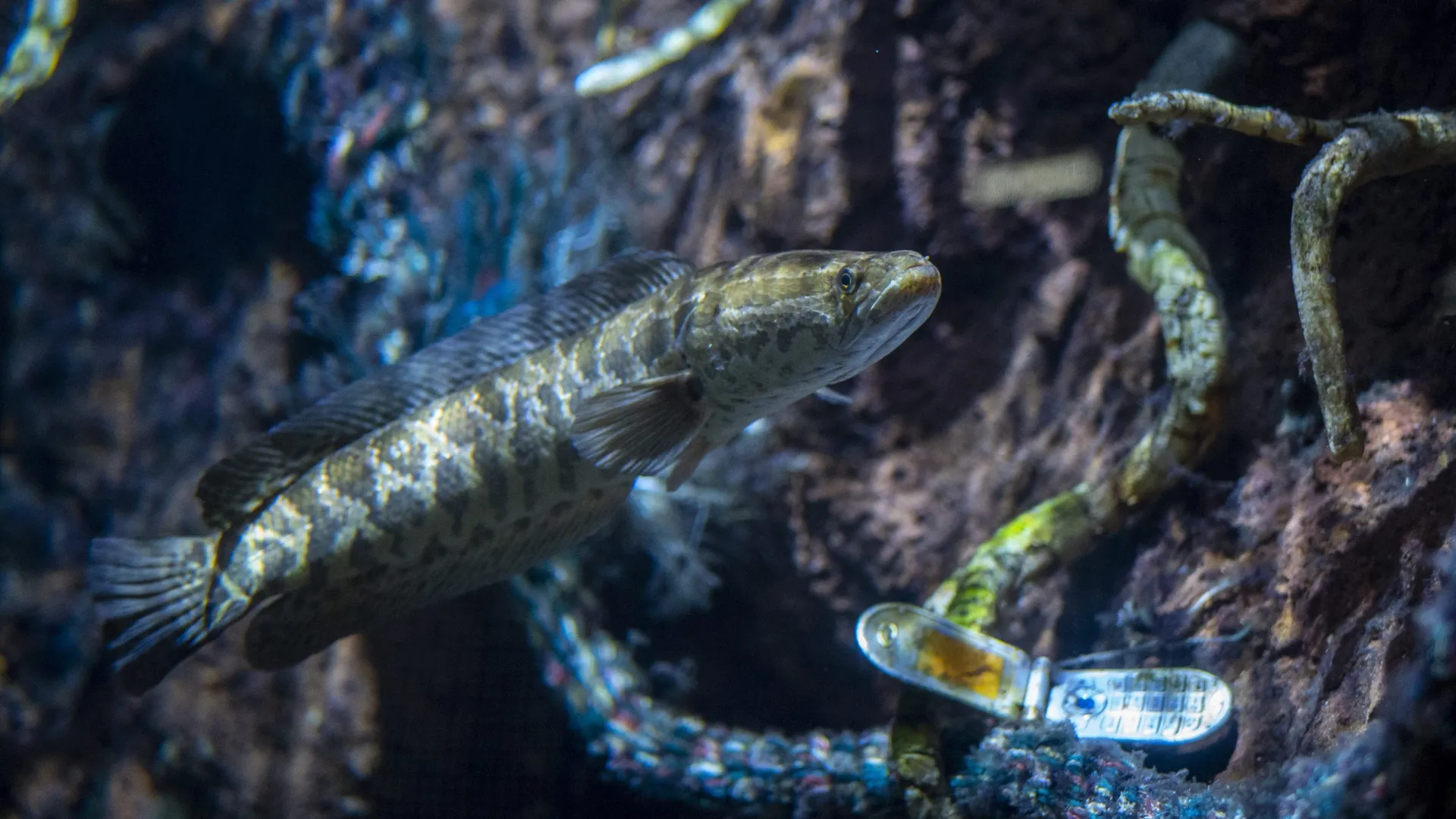Chattanooga, Tenn. (April 19, 2021) – A pair of new exhibits at the Tennessee Aquarium show how microplastics can negatively affect the health of the ocean as well as rivers, lakes and streams. Opening today in the River Journey building, the exhibits were funded by a grant from the Tennessee Department of Transportation in support of its Nobody Trashes Tennessee litter reduction campaign.
The new exhibits, which include actual debris taken from the banks of the Tennessee River, demonstrate the connection between land-based pollution and aquatic ecosystems through novel, touchless interactive elements, informative videos and an exhibition of invasive aquatic wildlife such as a Northern Snakehead and Grass Carp. These non-native fish can be seen swimming in one of the exhibits alongside examples — some of them 3D-printed — of common roadside debris such as tires and car batteries, which can wreak havoc on aquatic systems.
“The connections between roadside litter, water quality and aquatic systems cannot be understated,” said Shawn Bible, beautification office manager, Tennessee Department of Transportation. “Nobody Trashes Tennessee aims to educate citizens on the impact of what may be perceived as a minor issue for the state. In reality, the state spends more than $19 million each year to clean up the more than 100 million pieces of litter on our roadways. We are pleased to partner with the Tennessee Aquarium on these interactive exhibits that aim to raise awareness and change behaviors.”


A video kiosk in the Rivers of the World gallery is bracketed by two cylinders filled with pieces of microplastic particulate. When inactive, the plastic fragments float to the surface of a water-filled receptacle. Once visitors wave their hands over a sensor, however, a vortex begins to spin the water, causing the debris to descend from the top of the tank like a swirling underwater tornado of plastic particles.
“I thought if we could do that with plastic particles in the water, it would be a great visual demonstration of the danger microplastics pose,” says Jeff Worley, the Aquarium’s manager of exhibit services, who designed the display. “This interactive, along with the video messages in our kiosk, makes the exhibit much more engaging and informative.”
The new exhibit helps visitors to visualize how trash can imperil aquatic ecosystems and impact waterways that millions rely on for recreation and drinking water. There’s tremendous potential for this exhibit to show a wide audience how changing their behavior on land can benefit the health of nearby waterways, says Dr. Anna George, the Aquarium’s vice president of conservation science and education.
“I hope that as people see the exhibit, they will begin to think about single-use plastics—those plastic items that we use once and throw away,” Dr. George says. “This is a great opportunity to show how making just a few small changes can safeguard the water we all depend on, human and animal alike.”
“Anything that is on land moves into our waterways,” Dr. George says. “If a piece of litter is thrown onto a street, wind might carry it to a stream or river. It might get washed or blown into storm drains and deposited in the nearest body of water. It is a safe assumption that any debris on land has a good chance of winding up in our water.”
Throughout the world, a plague of microplastic debris is choking the ocean and imperiling aquatic life, but some people find it difficult to care about or understand a problem they can’t see.
According to the National Oceanic and Atmospheric Administration, 80 percent of garbage found in the ocean comes from inland sources, such as leaked automotive fluids and littering. So even though the Department of Transportation might seem like an odd partner for an aquarium, there’s a fundamental connection between activity on land and the health of waterways, says Dr. George.
Widely publicized images of beaches blanketed by mounds of large single-use plastic litter such as straws, bottles and eating utensils bring attention to an issue that’s easy to comprehend. Microplastics, however, are a practically invisible menace. Measuring — at most — a fifth of an inch across, these eroded fragments of plastic and tiny plastic beads drift in unfathomable numbers while stealthily working their way up the food chain.
